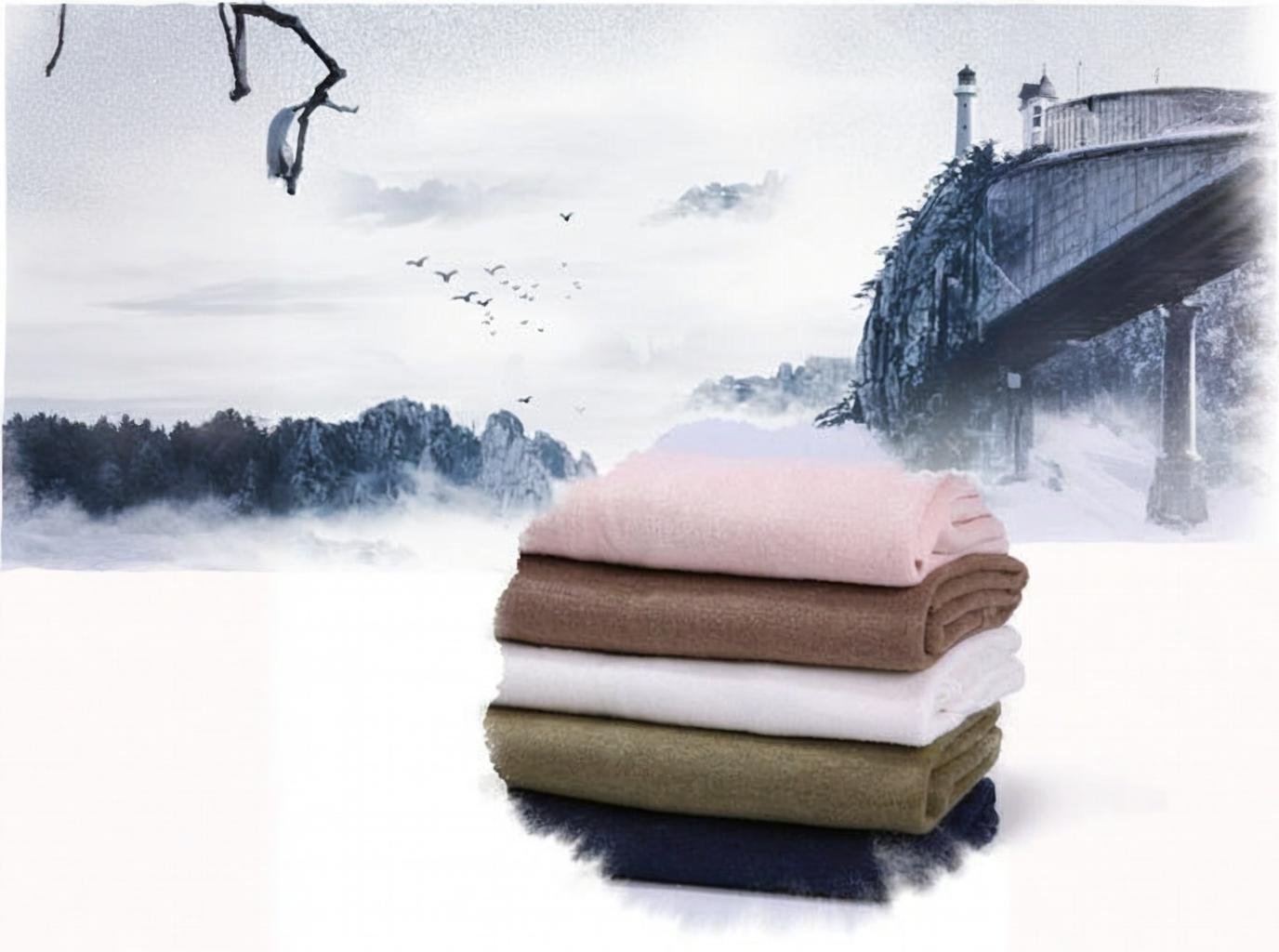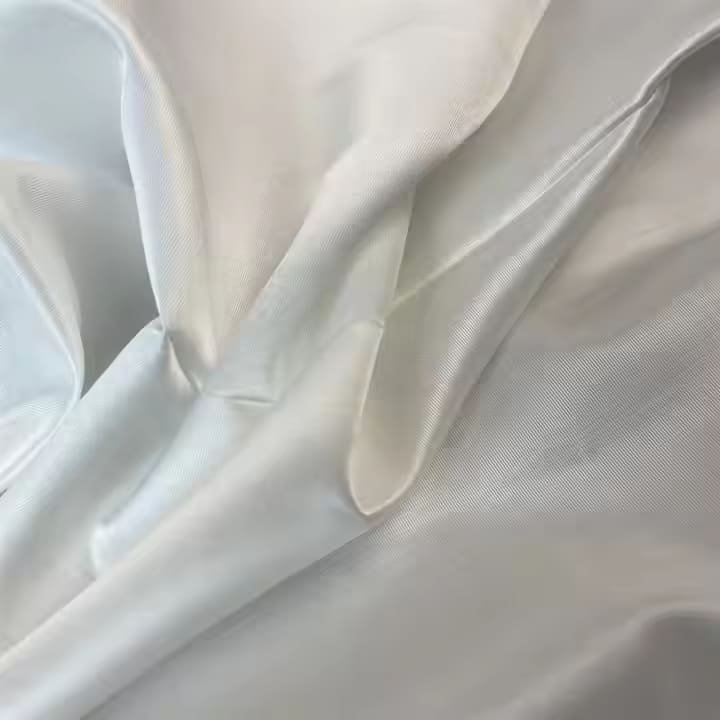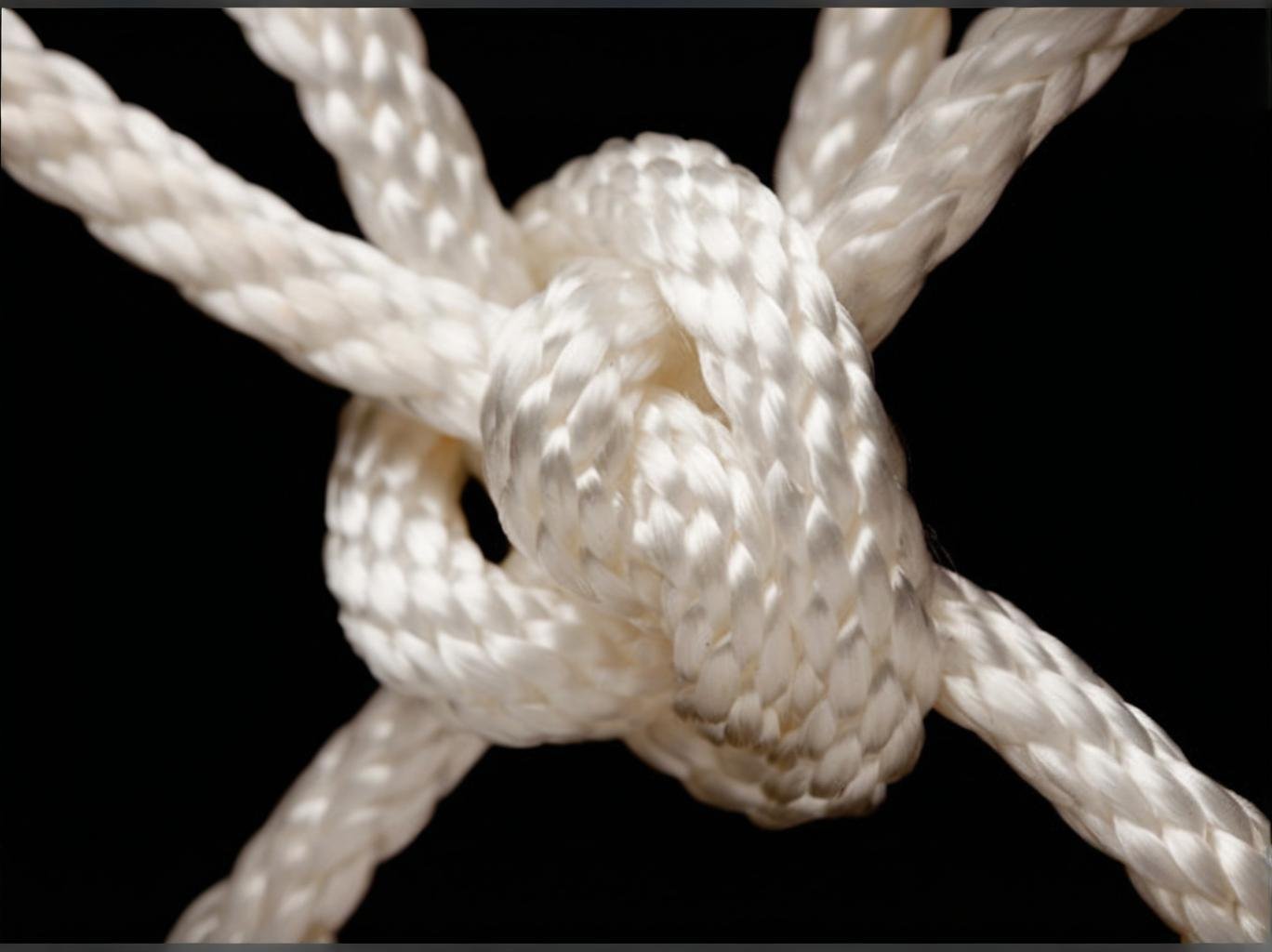How long does canvas fabric last?

Canvas fabric has long been a symbol of rugged reliability. From military tents and artist easels to tote bags and industrial tarps, this versatile material continues to be a top choice for both fashion and function. But how long can canvas actually last before it wears out, fades, or breaks down—and what factors influence its lifespan?
Canvas fabric can last anywhere from 5 to 30 years depending on its weight (oz/GSM), fiber type (cotton, polyester, blends), treatment (waxed or coated), and exposure to UV, moisture, and abrasion. With proper care and maintenance, heavy-duty canvas used in bags, covers, and upholstery can exceed a decade of active use.
At SzoneierFabrics, we’ve seen clients use the same 16oz waxed canvas for six product cycles without failure—while others had 10oz promotional totes fray in under a year due to poor storage and wash habits. The key isn’t just the fabric—it’s knowing how to choose and care for the right type of canvas for your specific purpose.
Let’s explore what really determines how long canvas lasts—and how to make your investment in it count.
1. What Factors Determine the Lifespan of Canvas Fabric?
Canvas fabric lifespan depends on several variables including fabric weight, fiber composition, environmental exposure, finishing treatments, and usage frequency. Heavier, treated, or blended canvas typically lasts longer than lightweight untreated versions.
1.1 Key Durability Factors:
| Factor | Influence on Longevity |
|---|---|
| Fabric Weight (oz or GSM) | Heavier canvas resists wear, tear, and puncture |
| Fiber Type (cotton, poly) | Polyester resists UV/moisture better than cotton |
| Environmental Exposure | Sunlight, water, and abrasion degrade natural fibers |
| Fabric Finish | Waxed, PU-coated, or dyed canvas lasts longer |
| Application Type | Upholstery wears differently than banners or bags |
| Maintenance Routine | Cleaning and storing methods impact lifespan |
1.2 Common Canvas Use Cases and Lifespan Estimates:
| Application | Canvas Type | Avg. Lifespan (Proper Use) |
|---|---|---|
| Tote Bags (12oz cotton) | Uncoated cotton | 1–3 years |
| Waxed Canvas Bags (16oz) | Waxed cotton | 5–10 years |
| Upholstery (14oz polycotton) | Blended canvas | 7–12 years |
| Outdoor Covers (18oz polycanvas) | PU-coated | 10–15 years |
| Promotional Light Totes (8oz cotton) | Raw cotton | 6–12 months |
1.3 Case Example:
A U.S.-based adventure gear brand sourced 18oz polycotton canvas from SzoneierFabrics for rugged backpacks. After 24 months in market—including exposure to rain, snow, and desert heat—95% of units still passed tensile and water resistance tests, showing <7% fiber degradation.
1.4 Critical Thinking Angle:
It’s not always about the thickest canvas. For example, 12oz waxed canvas with proper care may last longer than untreated 16oz cotton in high-moisture environments. Durability is multi-dimensional—not just measured by weight but by synergy between material, design, and use case.
2. How Does Canvas Weight (oz or GSM) Affect Durability?
Canvas weight—measured in ounces per square yard or GSM—directly affects its abrasion resistance, tensile strength, and overall lifespan. Heavier canvas fabrics (14oz–24oz) are significantly more durable and long-lasting than lighter ones (8oz–10oz), especially under stress or outdoor conditions.
2.1 Weight-to-Durability Correlation:
| Canvas Weight | GSM Equivalent | Typical Use | Durability Rating (1–10) |
|---|---|---|---|
| 8 oz | \~270 GSM | Light totes, promo bags | 3 |
| 10 oz | \~340 GSM | Mid-range bags, decor | 5 |
| 12 oz | \~410 GSM | Fashion totes, light covers | 6 |
| 14 oz | \~475 GSM | Upholstery, work aprons | 8 |
| 16 oz | \~540 GSM | Tool bags, structured accessories | 9 |
| 18–24 oz | \~600–810 GSM | Heavy-duty covers, military use | 10 |
2.2 How Weight Translates to Performance:
- Thicker canvas (14oz+) resists punctures and stretching
- Heavier canvas holds structure and tension longer in seams
- Lighter canvas is more flexible but frays and tears more easily
- High-GSM polycanvas offers better outdoor durability than equivalent cotton canvas
2.3 Real-Life Testing:
SzoneierFabrics conducted Martindale abrasion tests on 10oz and 16oz canvas samples. After 25,000 cycles:
- 10oz cotton canvas showed visible fray at seams and surface thinning
- 16oz polycotton canvas retained 90% surface integrity with minimal pilling
2.4 Buyer Tip:
When selecting canvas for commercial use, choose at least 12oz for moderate-duty items and 16oz or higher for products requiring long-term structural integrity—such as tents, gear bags, or equipment covers.
3. Is Cotton Canvas More Durable Than Polyester or Blended Canvas?
Cotton canvas is strong and naturally breathable but less resistant to UV, mildew, and moisture than polyester or polycotton blends. For outdoor use or prolonged wear, polyester canvas and poly-cotton blends generally offer superior durability and dimensional stability.
3.1 Material Comparison Chart:
| Feature | 100% Cotton Canvas | 100% Polyester Canvas | Poly-Cotton Blend Canvas |
|---|---|---|---|
| Natural Fiber | Yes | No | Partial |
| UV Resistance | Moderate | High | High |
| Moisture Resistance | Low | Very High | High |
| Breathability | High | Moderate | Medium |
| Abrasion Resistance | Moderate | High | High |
| Biodegradability | Yes | No | Partial |
| Typical Use Lifespan | 3–7 years | 7–15 years | 5–12 years |
3.2 Application-Specific Durability:
| Use Case | Recommended Canvas Type | Reason |
|---|---|---|
| Fashion tote bags | Cotton or cotton-linen canvas | Breathable, dyeable, aesthetically soft |
| Waterproof outdoor covers | Polyester canvas (PU-coated) | High resistance to water, mold, and UV rays |
| Workwear aprons or bags | Poly-cotton blend (12oz+) | Maintains structure, resists abrasion & fray |
3.3 Critical Analysis:
While cotton canvas is preferred for its natural feel, eco appeal, and print receptivity, it’s not ideal for high-humidity, high-UV environments without treatment. Polyester canvas and blends outperform in long-term commercial or industrial use, especially when weight-to-resilience ratio matters.
3.4 Real Case:
A South African agriculture client originally used 100% cotton canvas for equipment tarps. After one rainy season, 38% showed mildew and UV fade. Switching to 16oz polycotton with PU backing reduced defect rate by over 80% and extended product life to 5+ years outdoors.
4. How Long Does Waxed Canvas Last Compared to Regular Canvas?
Waxed canvas lasts significantly longer than regular canvas in harsh environments due to its water resistance, surface protection, and reinforced structure. With minimal maintenance, waxed canvas bags and covers can last 10–30 years, while untreated canvas may degrade in 3–7 years.
4.1 Why Waxed Canvas Outperforms:
- Wax coating repels moisture and prevents mold/mildew
- Increased fabric weight due to wax layer adds structure
- Surface friction reduces abrasion damage over time
- Gains patina with age rather than looking worn out
4.2 Waxed vs. Unwaxed Performance Chart:
| Attribute | Waxed Canvas (16oz) | Unwaxed Cotton Canvas (16oz) |
|---|---|---|
| Water Resistance | Excellent | Poor (unless coated separately) |
| UV Resistance | High | Moderate |
| Flexibility | Moderate-Stiff | Moderate |
| Patina Over Time | Develops richly | Fades or frays |
| Lifespan (daily use) | 10–30 years | 3–7 years |
| Maintenance Required | Occasional rewaxing | Frequent cleaning |
4.3 Maintenance Consideration:
- Waxed canvas requires re-waxing every 12–24 months to maintain waterproofing
- Cleaning must be dry or damp cloth only—machine washing removes wax layer
4.4 Product Applications for Waxed Canvas:
| Product Category | Longevity Advantage |
|---|---|
| Laptop Bags / Briefcases | Structured look, moisture protection |
| Outdoor Tool Rolls | Holds shape, repels grease and dirt |
| Field Covers | Stays intact in wet/sandy/dirty conditions |
| Motorcycle Luggage | Water-resistant and abrasion-tough |
4.5 Case Study:
A premium outdoor apparel brand sourced 18oz waxed canvas from SzoneierFabrics for limited-edition duffel bags. After 4 years in cold, wet European climates, 94% of the original bags remained fully functional—requiring only rewaxing and minor seam touch-ups.
5. What Role Does UV, Water, and Abrasion Resistance Play in Canvas Longevity?
UV, water, and abrasion resistance are critical factors in determining how long canvas fabric lasts in real-world use. Canvas exposed to sunlight, friction, or moisture without proper treatment or finishing can degrade up to 60% faster than treated variants.
5.1 Environmental Stress Impact Table:
| Exposure Type | Risk Without Protection | Expected Lifespan Reduction |
|---|---|---|
| UV Radiation | Fading, fiber breakdown | 30–50% |
| Water/Moisture | Mold, mildew, rot | 40–60% |
| Friction/Abrasion | Surface thinning, fray | 25–40% |
5.2 How Each Factor Affects Durability:
- UV Rays: Break down cotton cellulose fibers over time, especially in dry, high-elevation, or high-heat environments.
- Water Exposure: Repeated wetting and drying causes shrinkage, mildew growth, and fiber swelling, especially for untreated cotton canvas.
- Abrasion: Causes surface pilling, yarn slippage, and eventual punctures, particularly on corners, straps, or folds in daily-use products.
5.3 Performance Test: Untreated vs. Treated Canvas
| Canvas Type | UV Test (500 hrs) | Water Repellency (Spray Test) | Abrasion Resistance (Martindale cycles) |
|---|---|---|---|
| 12oz Cotton (raw) | Faded, 38% strength loss | 30 (Poor) | 10,000 cycles (Moderate) |
| 12oz Cotton (PU Coated) | No fading, 6% loss | 90 (Excellent) | 18,000 cycles (High) |
| 16oz Waxed Canvas | Minimal change | 80–90 (Very Good) | 25,000+ cycles (Excellent) |
5.4 Recommendations for Different Use Cases:
| Use Environment | Fabric Treatment Required |
|---|---|
| Outdoor (UV + moisture) | Waxed, PU, or PVC-coated canvas |
| Indoor high-contact | Tight-weave polycotton with abrasion rating |
| Retail/fashion use | Optional treatment based on usage cycle |
5.5 Case Insight:
An outdoor furniture OEM in Spain using untreated 14oz cotton canvas saw fabric discoloration and mold in under 6 months. Switching to PU-coated polycanvas increased product life by 3.5x under identical conditions—with zero reported fabric failures.
6. How Should Canvas Be Maintained to Maximize Its Lifespan?
Proper maintenance—such as gentle cleaning, dry storage, rewaxing (if applicable), and UV shielding—can extend canvas fabric lifespan by several years. Most premature degradation is caused not by wear, but by poor washing, folding, or storage habits.
6.1 Maintenance Best Practices:
| Maintenance Task | Recommended Frequency | Impact on Longevity |
|---|---|---|
| Surface Cleaning | Weekly or monthly | Removes dirt before staining |
| Deep Cleaning | Only when needed | Avoids breaking down fiber |
| Dry Storage | Always | Prevents mold, mildew |
| Re-waxing (if waxed) | Every 12–24 months | Maintains water repellency |
| UV Exposure Management | Avoid direct long-term sun | Preserves dye, prevents brittleness |
6.2 Cleaning Methods by Canvas Type:
| Canvas Type | Cleaning Method |
|---|---|
| Raw Cotton | Hand wash with mild detergent, air dry |
| Waxed Canvas | Wipe with damp cloth, re-wax as needed |
| PU/Poly Coated | Hose down or sponge clean, no machine washing |
| Polycotton Blend | Gentle machine wash or hand wash, line dry |
6.3 Storage Tips:
- Never fold wet canvas—this causes mildew and permanent creasing
- For bags, stuff with acid-free paper during off-season storage
- Use canvas covers or UV-resistant bags for long-term outdoor storage
6.4 Real Example:
A premium photography gear company used 16oz waxed canvas in their field bags. Customers who followed the brand’s care guide saw their bags last over 8 years. Those who machine-washed the bags experienced seam breakdowns and wax loss within 18 months.
6.5 Summary Takeaway:
The same 14oz canvas could last 2 years or 12 years—depending on how it’s cared for. B2B buyers should always include maintenance guidance with products and work with suppliers like SzoneierFabrics to pre-treat or coat canvas where needed.
7. Do Canvas Bags, Covers, or Upholstery Wear Out at Different Rates?
Yes, canvas bags, covers, and upholstery wear out at different rates depending on exposure, weight distribution, and usage frequency. Bags tend to degrade faster due to mobility and stress points, while properly used upholstery can last over a decade.
7.1 Canvas Product Lifespan Estimates:
| Product Type | Common Weight | Exposure Level | Typical Lifespan |
|---|---|---|---|
| Tote Bags | 10–14oz cotton | High handling | 1–4 years |
| Tool Bags | 14–18oz poly | High load | 5–10 years |
| Furniture Upholstery | 14–16oz blend | Indoor contact | 7–12 years |
| Outdoor Covers | 16–24oz poly | UV, rain | 5–15 years |
| Luggage/Duffels | 16oz waxed | Travel wear | 6–10 years |
7.2 Why Use Matters More Than Weight Alone:
- Bags undergo constant handling, folding, washing, and surface contact, leading to quicker wear at seams and strap points.
- Covers are stationary but face severe UV and moisture degradation if untreated.
- Upholstery benefits from indoor protection, slower physical abrasion, and better load distribution, extending its lifespan.
7.3 Wear & Tear Hotspots:
| Product Area | Common Fail Points | Reinforcement Suggestions |
|---|---|---|
| Bag Bottom Corners | Scuffs, punctures | Add leather or double canvas patches |
| Cover Seams | UV degradation, water seepage | Use UV-resistant thread and seam tape |
| Seat Cushions | Friction thinning, dye fading | Use polyester-cotton canvas with topcoat |
7.4 Pro Tip:
If your brand offers multiple canvas-based SKUs, consider adjusting the GSM, coating, or reinforcement strategy for each product category—even if they’re all “canvas.” One-size-fits-all fabric specs may underperform in diverse end uses.
8. What Is the Average Lifespan of Canvas Fabric in Commercial Use?
In commercial settings, canvas fabric typically lasts 3–15 years depending on its GSM, application, environmental exposure, and maintenance. Heavy-duty canvas in indoor or semi-outdoor use often exceeds 10 years with proper handling.
8.1 Commercial Use Case Lifespan Table:
| Industry Use | Canvas Type | Avg. Service Life |
|---|---|---|
| Restaurant Aprons | 10–12oz cotton | 2–4 years |
| Retail Display Fixtures | 12oz polycotton | 3–6 years |
| Tent & Marquee Rental | 18oz PU-coated poly | 5–10 years |
| Outdoor Gear Packaging | 14oz waxed cotton | 5–7 years |
| Hotel Furniture Upholstery | 14oz cotton-poly blend | 8–12 years |
| Agriculture Shade Covers | 20oz PVC/poly blend | 8–15 years |
8.2 Key Factors Affecting Commercial Longevity:
- Frequency of Use: Daily wear accelerates breakdown
- Fabric Finishing: Coated canvas greatly outlasts raw canvas
- Repairability: Waxed or thick canvas is easier to patch or reinforce
- Cleaning Protocol: Harsh chemical cleaners shorten lifespan
8.3 Case Snapshot:
SzoneierFabrics supplied 18oz PU-coated canvas to an event rental company for tent sidewalls. With proper cleaning and dry storage, the panels were used across 6 seasons, with 92% of them still serviceable at year seven.
8.4 Strategic Recommendation:
Commercial buyers should evaluate not just the upfront fabric cost, but the cost per year of use. Heavier or coated canvas may increase initial spend by 15–30%, but often doubles or triples the service life, reducing long-term sourcing and replacement overhead.
How to Maximize Canvas Performance in Your Projects
Canvas isn’t a one-size-fits-all material—it’s a system of fiber type, weight, finishing, and usage strategy. Understanding what truly affects the lifespan of canvas fabric helps you make smarter decisions in product development, procurement, and after-sales support.
At SzoneierFabrics, we specialize in:
- ✅ Supplying a wide range of canvas fabrics (cotton, polyester, blends, waxed, coated)
- ✅ Advising clients on the best GSM, fiber blend, and finish based on end use
- ✅ Providing free samples, fast prototyping, and low MOQ production
- ✅ Delivering long-term value through fabric durability testing and quality assurance
Ready to choose the right canvas that lasts? Contact SzoneierFabrics today for free consultation, sourcing support, or to request a sample tailored to your product needs.
Can't find the answers?
No worries, please contact us and we will answer all the questions you have during the whole process of bag customization.
Make A Sample First?
If you have your own artwork, logo design files, or just an idea,please provide details about your project requirements, including preferred fabric, color, and customization options,we’re excited to assist you in bringing your bespoke bag designs to life through our sample production process.



